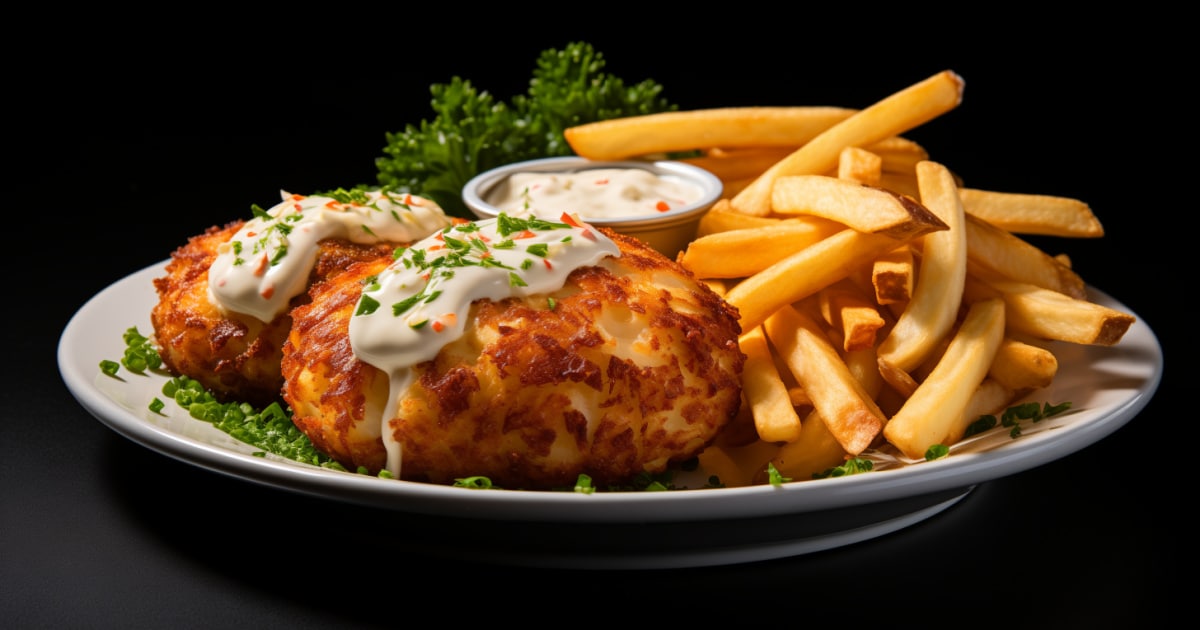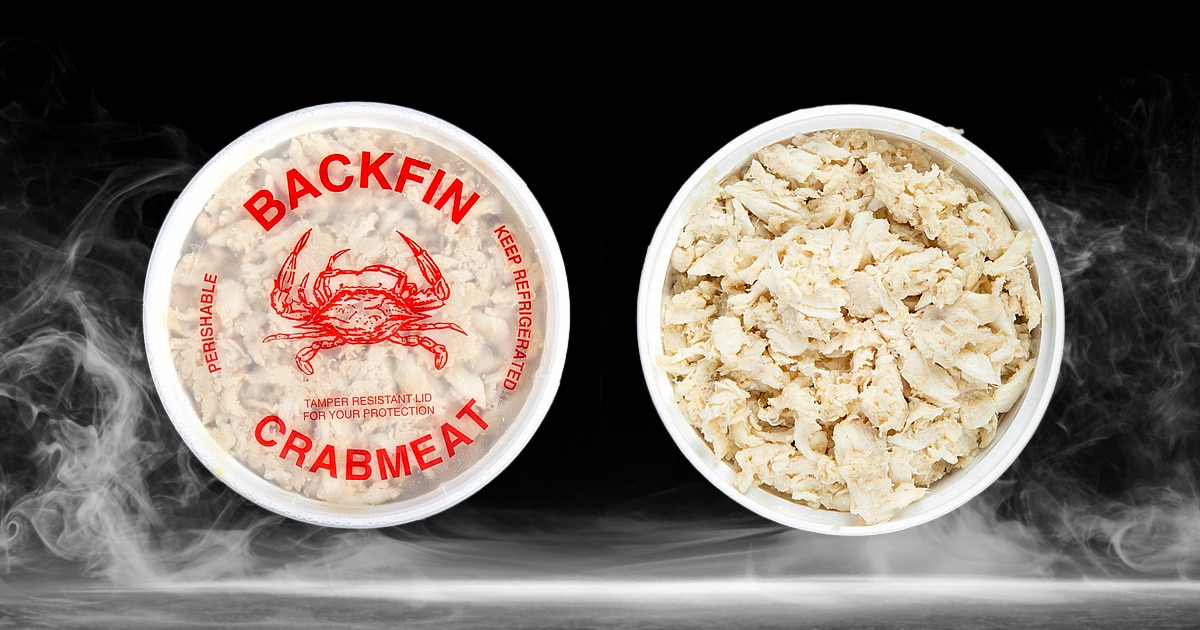Discover the Charm of Backfin Crab Meat
Have you ever wondered about the different types of crab meat when browsing your favorite seafood menu? Among them, backfin crab meat shines as a versatile and flavorful choice, perfect for a variety of dishes. Extracted from the body of the blue crab, backfin combines taste, texture, and culinary flexibility, making it a hidden gem in the world of seafood.
In this guide, we’ll explore everything about backfin crab meat: what makes it unique, how it stands out from other crab meat types, and why it’s a must-try for any seafood lover. Whether you’re planning to whip up some classic crab cakes, a creamy dip, or a simple pasta, backfin crab meat promises to elevate your dishes with its delicate flavor and tender consistency. Let’s dive into the world of backfin crab meat and discover how it can transform your next meal into a seafood delight.
ONLINE SHIPPING
We’re excited to announce that we will soon be offering online shipping for our premium Maryland Blue Crabs! This new service will allow you to enjoy the fresh, succulent taste of our crabs from the comfort of your own home, no matter where you are. To make sure you’re among the first to experience this convenience, we invite you to visit our website and sign up for our notification email. By doing so, you’ll be promptly informed as soon as our shipping service goes live. Don’t miss out on this opportunity to have the finest Maryland Blue Crabs delivered straight to your doorstep. Click the button to visit the store to sign-up! 🦀📦🌍
What Exactly Is Backfin Crab Meat?
Backfin crab meat comes from the blue crab, a staple in seafood cuisine, especially in Maryland and along the East Coast. But what sets backfin apart from other types of crab meat, like the coveted jumbo lump or the robust claw meat? It’s all about where it’s found on the crab and its unique qualities.
Backfin is harvested from the body of the blue crab, specifically from the muscles around the swimming fins. It’s known for its fine texture and sweet flavor, making it a versatile ingredient in the kitchen. While it may contain smaller pieces compared to jumbo lump, backfin crab meat is prized for its balance of taste and affordability, offering a mix of both lump and flake pieces.
This type of crab meat is ideal for recipes that require a more refined texture and a flavor that complements rather than dominates the dish. From traditional Maryland crab soups and dips to fillings for seafood pastas and quiches, backfin crab meat adds a touch of elegance and depth to a wide range of culinary creations.
Understanding the characteristics of backfin crab meat is key to appreciating its role in seafood dishes. Its adaptability and delicious taste make it a favorite among chefs and home cooks alike, eager to bring the essence of the Chesapeake Bay to their tables.
The Culinary Appeal of Backfin Crab Meat
Backfin crab meat holds a revered spot in the culinary world, celebrated for its delicate texture and subtly sweet flavor. This section delves into why backfin crab meat is a cherished ingredient among chefs and culinary enthusiasts, and how its versatility makes it suitable for an array of delightful dishes.
Versatility in the Kitchen: One of the most compelling attributes of backfin crab meat is its culinary versatility. Its fine texture and nuanced flavor profile allow it to blend seamlessly into various dishes, from creamy crab dips and rich soups to elegant crab cakes and stuffed seafood entrees. Backfin crab meat can absorb and complement the flavors of other ingredients without losing its distinctive taste, making it a versatile choice for both simple and complex recipes.
A Staple for Maryland Classics: In Maryland, where crab culture is an integral part of the state’s identity, backfin crab meat is often the star of traditional dishes. It’s the preferred choice for authentic Maryland crab cakes, where its ability to bind other ingredients while maintaining a tender bite is highly valued. Similarly, backfin crab meat is a favorite in crab imperial, a dish known for its luxurious, creamy texture and rich flavor.
Economic and Flavorful Option: While jumbo lump crab meat may be sought after for its impressive size and presentation, backfin crab meat offers a more economical alternative without compromising on flavor or quality. This makes it an accessible option for home cooks looking to experiment with seafood dishes or for restaurants aiming to offer high-quality crab dishes without the premium price tag of jumbo lump meat.
The culinary appeal of backfin crab meat lies in its ability to elevate a wide range of dishes with its sweet, delicate flavor and versatile texture. Whether you’re a seasoned chef or a home cook, incorporating backfin crab meat into your culinary repertoire can add a touch of sophistication and depth to your seafood dishes, making every meal a celebration of flavor.

Harvesting and Preparing Backfin Crab Meat
The journey of backfin crab meat from the waters of the Chesapeake Bay to the kitchen table is a fascinating process that combines traditional crabbing methods with meticulous preparation. This section explores how backfin crab meat is harvested and prepared, ensuring that every bite retains the freshness and flavor that this type of crab meat is known for.
Sustainable Harvesting Practices: The blue crab, the source of backfin crab meat, is harvested from the Chesapeake Bay and its tributaries using methods that prioritize sustainability and environmental responsibility. Watermen employ crab pots and trotlines that minimize bycatch, ensuring that only crabs of legal size are caught. This careful approach helps maintain the blue crab population and ensures the health of the bay’s ecosystem.
From Crab to Kitchen: Once the blue crabs are harvested, they are brought to shore where the process of extracting the backfin meat begins. The crabs are first steamed without any seasonings to preserve the natural flavor of the meat. After cooling, skilled workers meticulously pick the crabs by hand, separating the backfin meat from the other parts of the crab. This labor-intensive process is crucial for obtaining the high-quality backfin crab meat that is sought after by chefs and seafood lovers.
Quality and Care in Preparation: The preparation of backfin crab meat is done with the utmost care to ensure that the delicate texture and flavor of the meat are preserved. The picked meat is carefully inspected for any shell fragments and is then packaged for sale. This attention to detail throughout the harvesting and preparation process is what sets backfin crab meat apart as a premium seafood product.
Understanding the care and tradition involved in harvesting and preparing backfin crab meat highlights the dedication to quality that defines the Chesapeake Bay’s crabbing industry. It’s this commitment to excellence that ensures the backfin crab meat you enjoy is not only delicious but also sustainably sourced, honoring the rich heritage of Maryland’s seafood tradition.
Selecting the Best Backfin Crab Meat
When it comes to incorporating backfin crab meat into your dishes, selecting the highest quality meat is crucial for achieving the best flavor and texture. Here are some expert tips to help you choose the best backfin crab meat, ensuring your seafood dishes are both delicious and memorable.
Freshness is Paramount: Look for backfin crab meat that smells fresh and sweet, similar to the ocean. Avoid any crab meat with a fishy or ammonia-like odor, as this can indicate spoilage. Fresh crab meat should have a bright, clean color and a firm texture.
Understanding Packaging: Backfin crab meat is often available in both fresh and pasteurized forms. Fresh backfin crab meat is typically refrigerated and should be used within a few days of purchase. Pasteurized crab meat, sealed in cans or plastic containers, has a longer shelf life but should still be consumed shortly after opening for the best taste.
Source Matters: Whenever possible, choose backfin crab meat sourced from known and reputable suppliers who adhere to sustainable harvesting practices. This not only ensures the quality of the crab meat but also supports environmentally responsible seafood sourcing.
Inspect for Purity: High-quality backfin crab meat should be free of shells and cartilage. While it’s normal for backfin crab meat to contain smaller pieces compared to jumbo lump, the meat should still appear clean and intact, without excessive shredding or mushiness.
By keeping these tips in mind when selecting backfin crab meat, you can ensure that you’re starting with the best possible ingredient. High-quality backfin crab meat can elevate any dish, from traditional Maryland crab cakes to innovative seafood pasta, making your culinary creations stand out with their exceptional flavor and texture.
Storing and Cooking with Backfin Crab Meat
Proper storage and cooking techniques are essential to preserve the delicate flavor and texture of backfin crab meat. Whether you’re planning a sophisticated seafood dinner or a casual weekend brunch, knowing how to handle this premium ingredient can make all the difference in your dishes. Here are some guidelines for storing and cooking with backfin crab meat to ensure you get the most out of this versatile seafood.
Storing Backfin Crab Meat:
- Refrigeration: Fresh backfin crab meat should be stored in the refrigerator immediately upon purchase. Place it in the coldest part of your fridge, ideally in an airtight container, to maintain its freshness. It’s best used within 1-2 days.
- Freezing: If you need to store backfin crab meat for a longer period, freezing is an option. Pack the crab meat in airtight containers or heavy-duty freezer bags to prevent freezer burn. Properly stored, frozen backfin crab meat can last up to 3 months. Thaw it in the refrigerator overnight before use.
Cooking with Backfin Crab Meat:
- Gentle Incorporation: Backfin crab meat is prized for its delicate texture, so it’s important to fold it gently into dishes to avoid breaking the meat apart. This is especially crucial for recipes like crab cakes or salads where the integrity of the crab meat is a key feature.
- Versatile Use: Backfin crab meat’s subtle sweetness makes it a fantastic addition to a variety of recipes, from creamy crab dips and soups to stuffed seafood entrees and pasta dishes. Its versatility allows it to be a star ingredient in both hot and cold preparations.
- Avoid Overcooking: Since backfin crab meat is already cooked during the picking process, it only needs to be heated through when added to dishes. Overcooking can dry out the meat and diminish its flavor. Add backfin crab meat towards the end of the cooking process to ensure it remains tender and juicy.
By following these storage and cooking tips, you can maximize the culinary potential of backfin crab meat in your recipes. Its exquisite taste and texture can elevate any meal, making your dishes a hit with family and friends. Whether you’re a seasoned chef or a home cook, incorporating backfin crab meat into your cooking repertoire is sure to bring a touch of elegance and flavor to your table.
Incorporating Backfin Crab Meat into Your Culinary Repertoire
Backfin crab meat, with its delicate texture and nuanced sweetness, is a culinary treasure that can elevate a wide range of dishes. From the heart of Maryland’s Chesapeake Bay to kitchens around the country, this versatile seafood ingredient offers a taste of the coast that is both refined and unmistakably delicious. As we’ve explored the ins and outs of selecting, storing, and cooking with backfin crab meat, it’s clear that this ingredient deserves a place in every seafood lover’s culinary repertoire.
Embracing backfin crab meat in your cooking is not just about adding a touch of luxury to your meals; it’s about celebrating the rich seafood tradition that Maryland is known for. Whether you’re crafting a batch of savory crab cakes, a creamy crab dip for entertaining, or simply tossing it into a fresh summer salad, backfin crab meat brings a level of sophistication and flavor that is hard to match.
As you experiment with backfin crab meat in your own dishes, remember the importance of quality and sustainability. Choosing responsibly sourced backfin crab meat not only ensures the best taste and texture but also supports the health of our oceans and the communities that depend on them. With each dish you prepare, you’re not just enjoying the bounty of the sea; you’re part of a larger story of culinary tradition and environmental stewardship.
We encourage you to explore the possibilities that backfin crab meat offers. Let it inspire your creativity in the kitchen, and share the joy of cooking with those you love. With backfin crab meat, every meal can be an occasion to savor and remember.
Explore More From T.L. Morris Seafood
If you enjoyed this post, you’re in for a treat! Dive deeper into seafood with some of my other articles that readers have loved:
- What is Jumbo Lump Crab Meat?– Explore the art of cooking with jumbo lump crab meat: tips for selecting, storing, and creating gourmet dishes that celebrate its delicate flavor.
- Whats The Difference Between Jumbo Lump & Backfin Crab Meat?– Backfin Crab Meat Is Generally Most Popular We see this question come up quite often. Both Backfin Crab Meat and Jumbo Lump are quite different.
- Chesapeake Charm: The Story of Maryland Crabs and Their Cultural Legacy– Unveil the captivating world of Maryland crabs: a journey through the vibrant culinary legacy and deep-rooted traditions of the Chesapeake Bay.
Stay connected and keep exploring! Don’t forget to subscribe for the latest updates and insights.


